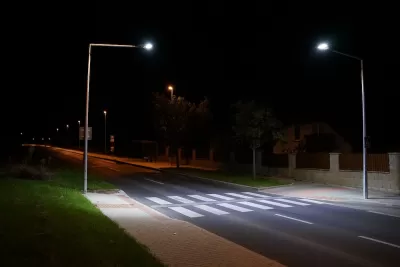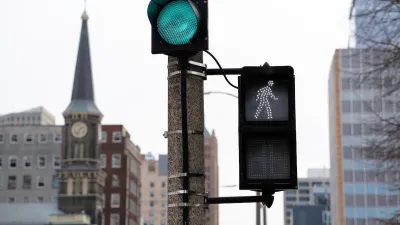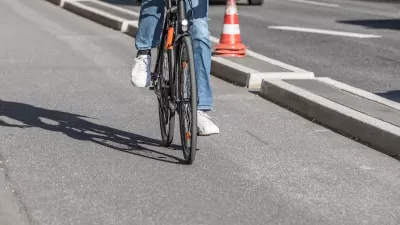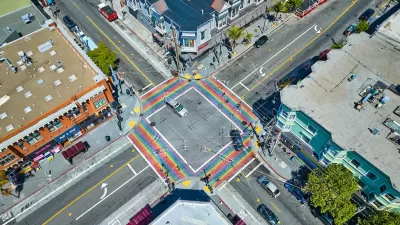In what should come as a surprise to no one, drivers are much more likely to yield to pedestrians when they can actually see them.

A new study from the Insurance Institute for Highway Safety emphasizes the importance of crosswalk lighting for pedestrian safety, reports Dan Zukowski in Smart Cities Dive.
The study analyzed four intersections in Kalamazoo, Michigan. “At these intersections, none of which had traffic signals, researchers found that drivers slowed where flashing beacons or any type of lighting were present, but a combination of flashing beacons and crosswalk lighting triggered by the pedestrian resulted in the highest yielding behavior.” At one dimly lit site, flashing beacons and crosswalk lighting made drivers 13 times more likely to yield to pedestrians.
The study highlights how simple, relatively inexpensive fixes can help stem the epidemic of traffic deaths facing most U.S. communities. According to IIHS President David Harkey, “We can stop pedestrians from being killed if we make sure drivers see them — but first city planners and road designers have to see the light.”
FULL STORY: Lighted crosswalks improve pedestrian safety at night, study shows

Study: Maui’s Plan to Convert Vacation Rentals to Long-Term Housing Could Cause Nearly $1 Billion Economic Loss
The plan would reduce visitor accommodation by 25,% resulting in 1,900 jobs lost.

North Texas Transit Leaders Tout Benefits of TOD for Growing Region
At a summit focused on transit-oriented development, policymakers discussed how North Texas’ expanded light rail system can serve as a tool for economic growth.

Why Should We Subsidize Public Transportation?
Many public transit agencies face financial stress due to rising costs, declining fare revenue, and declining subsidies. Transit advocates must provide a strong business case for increasing public transit funding.

How to Make US Trains Faster
Changes to boarding platforms and a switch to electric trains could improve U.S. passenger rail service without the added cost of high-speed rail.

Columbia’s Revitalized ‘Loop’ Is a Hub for Local Entrepreneurs
A focus on small businesses is helping a commercial corridor in Columbia, Missouri thrive.

Invasive Insect Threatens Minnesota’s Ash Forests
The Emerald Ash Borer is a rapidly spreading invasive pest threatening Minnesota’s ash trees, and homeowners are encouraged to plant diverse replacement species, avoid moving ash firewood, and monitor for signs of infestation.
Urban Design for Planners 1: Software Tools
This six-course series explores essential urban design concepts using open source software and equips planners with the tools they need to participate fully in the urban design process.
Planning for Universal Design
Learn the tools for implementing Universal Design in planning regulations.
Ascent Environmental
Borough of Carlisle
Institute for Housing and Urban Development Studies (IHS)
City of Grandview
Harvard GSD Executive Education
Toledo-Lucas County Plan Commissions
Salt Lake City
NYU Wagner Graduate School of Public Service





























